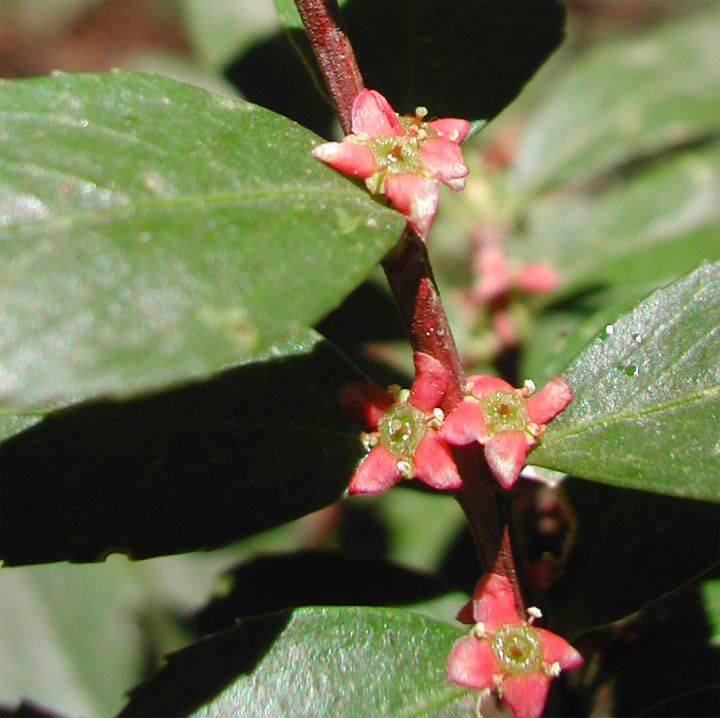Paxistima
|
Family: Celastraceae |
PLANTS: Low, evergreen, glabrous shrubs with subterranean rhizomes and sometimes adventitious roots on portions of the lower stems. LEAVES: opposite, simple, serrulate to crenulate (rarely subentire), coriaceous, short-petioled, smooth; stipules small, caducous. INFLORESCENCE: axillary cymes, often reduced to I flower. FLOWERS: calyx lobes 4, small, imbricate, green, widely ovate; petals 4, red-brown, longer than the calyx lobes; stamens 4, inserted in the edge of a broad nectariferous disk; ovary 2-carpellate, 2-loculed, superior, but sunken into the disk; style short to obsolete; stigma capitate to linear-clavate (rarely obscurely 2-lobed). CAPSULES: oblong. SEEDS: lor 2, oblong, erect, enclosed in a membranaceous, white, cleft aril. NOTES: 2 spp., 1 in AZ; widespread in N. Amer. (perhaps from the Greek: pachys = thick + stigma). The generic name has a complex history including 4 different spellings; Paxistima appears to be the correct choice. REFERENCES: Brasher, Jeffrey W. 1998. Celastraceae J. Ariz. - Nev. Acad. Sci. 30(2): 57. Fls perfect, 4-merous; stamens short; ovary bilocular, sunken in the center of the disk; capsule 2-valved; seeds 1 or 2; aril lacerate, whitish; small evergreen shrubs with opposite lvs and small axillary fls. 2, the other in w. U.S. (Pachistima and Pachystima, variant spellings) Gleason, Henry A. & Cronquist, Arthur J. 1991. Manual of vascular plants of northeastern United States and adjacent Canada. lxxv + 910 pp. ©The New York Botanical Garden. All rights reserved. Used by permission. |

